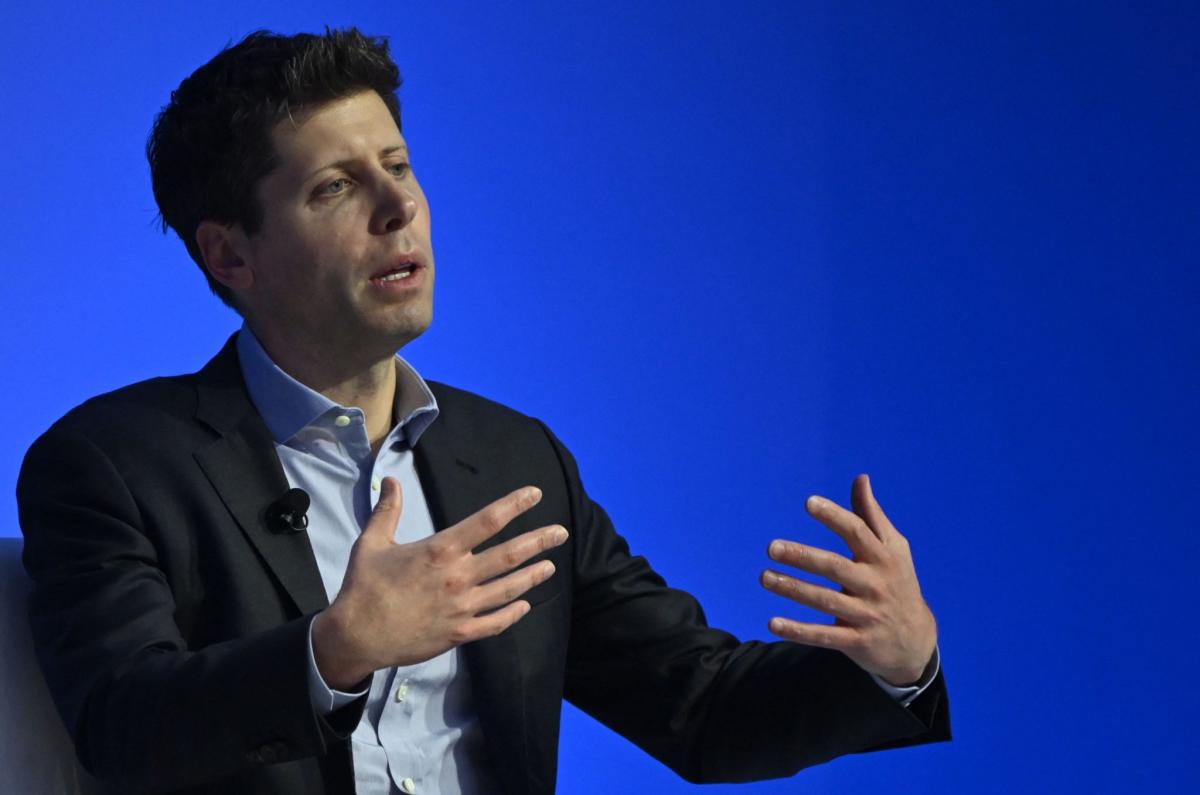OpenAI Unveils 'Sora' Text-to-Video Tool by Sam Altman
Kernkonzepte
OpenAI's new tool 'Sora' revolutionizes AI video generation, showcasing realistic videos from text prompts.
Zusammenfassung
OpenAI's latest creation, 'Sora,' has taken the AI world by storm with its ability to generate lifelike videos from simple text prompts. The tool surpasses competitors in realism and animation quality, impressing tech enthusiasts and content creators alike. Despite recent internal turmoil, OpenAI's comeback with 'Sora' demonstrates a significant leap in AI innovation and potential implications for the future of technology.
Zusammenfassung anpassen
Mit KI umschreiben
Zitate generieren
Quelle übersetzen
In eine andere Sprache
Mindmap erstellen
aus dem Quellinhalt
Quelle besuchen
finance.yahoo.com
AI just took another huge step: Sam Altman debuts OpenAI’s new ‘Sora’ text-to-video tool
Statistiken
Videos up to 60 seconds long are created by Sora using brief text prompts.
OpenAI's Sora showcases impressive physics of motion and real-world lighting effects.
Nvidia's stock rallied 50% in the past six weeks alone due to ongoing boom in AI stocks.
Zitate
"This is one of the most convincing AI-generated videos I’ve ever seen." - Marques Brownlee
"It’s truly the stuff of nightmares—which perfectly demonstrates the current, struggling reality of AI video generators." - Victor Tangermann
Wichtige Erkenntnisse aus
by Christiaan H... um finance.yahoo.com 02-26-2024
https://finance.yahoo.com/news/openai-sora-text-video-tool-131232622.html
Tiefere Fragen
What ethical considerations should be taken into account with the rapid advancement of AI video generation?
With the rapid advancement of AI video generation, several ethical considerations must be carefully addressed. Firstly, there is a significant concern regarding misinformation and deepfakes. As AI tools like OpenAI's 'Sora' become more sophisticated in creating realistic videos from text prompts, the potential for malicious actors to create convincing fake videos for propaganda or spreading false information increases. This can have severe consequences on public trust and societal stability.
Secondly, privacy concerns arise as AI-generated videos could potentially be used to manipulate individuals by placing them in situations they never experienced. This raises questions about consent and the boundaries between reality and fabricated content.
Moreover, issues related to bias and representation need to be considered. If not properly trained or monitored, AI algorithms may perpetuate stereotypes or discriminatory practices in the generated content. It is crucial to ensure that these systems are developed ethically and inclusively.
Lastly, there are implications for intellectual property rights when it comes to AI-generated content. Determining ownership of creations produced by machines poses legal challenges that require clear regulations and guidelines.
How might OpenAI's 'Sora' impact job security for human content creators in the future?
The introduction of OpenAI's 'Sora' could potentially disrupt job security for human content creators in various ways. As this tool enables quick and high-quality video production from text prompts, it may reduce the demand for traditional human-led video creation processes.
Content creators who specialize in tasks such as animation, visual effects, or video editing may face competition from AI systems like 'Sora,' which can deliver comparable results at a fraction of the time and cost. This could lead to downsizing or restructuring within industries reliant on manual labor-intensive creative work.
Additionally, if businesses opt for automated solutions like 'Sora' over hiring human professionals for their video production needs due to efficiency gains or cost savings, it could result in displacement of jobs within these sectors.
However, it is essential to note that while AI technologies like 'Sora' may automate certain aspects of content creation, there will likely still be a demand for human creativity, storytelling skills, strategic thinking abilities that machines cannot replicate entirely. Content creators who adapt their skill sets towards complementary roles working alongside AI tools rather than being replaced by them may find new opportunities emerging in this evolving landscape.
What role does governance play in balancing innovation and safety within companies like OpenAI?
Governance plays a critical role in balancing innovation with safety within companies like OpenAI where cutting-edge artificial intelligence technologies are developed. Effective governance frameworks help establish guidelines and protocols that ensure responsible research practices while fostering technological advancements without compromising ethical standards or endangering societal well-being.
In terms of innovation management at OpenAI specifically:
Governance structures can facilitate transparent decision-making processes regarding research directions,
Ensure adherence to ethical principles,
Mitigate risks associated with unintended consequences,
Safeguard against misuse of powerful technologies.
Regarding safety measures:
Governance mechanisms help implement rigorous testing procedures,
Establish safeguards against biases,
Address potential risks posed by advanced AI systems.
Furthermore:
Regulatory compliance frameworks guide companies like OpenAI through complex legal landscapes surrounding emerging technologies,
Encouraging collaboration between industry stakeholders policymakers academia fosters an environment conducive both innovation safety
Ultimately effective governance ensures alignment between technological progress social values promoting sustainable development beneficial outcomes all stakeholders involved including society large
0
